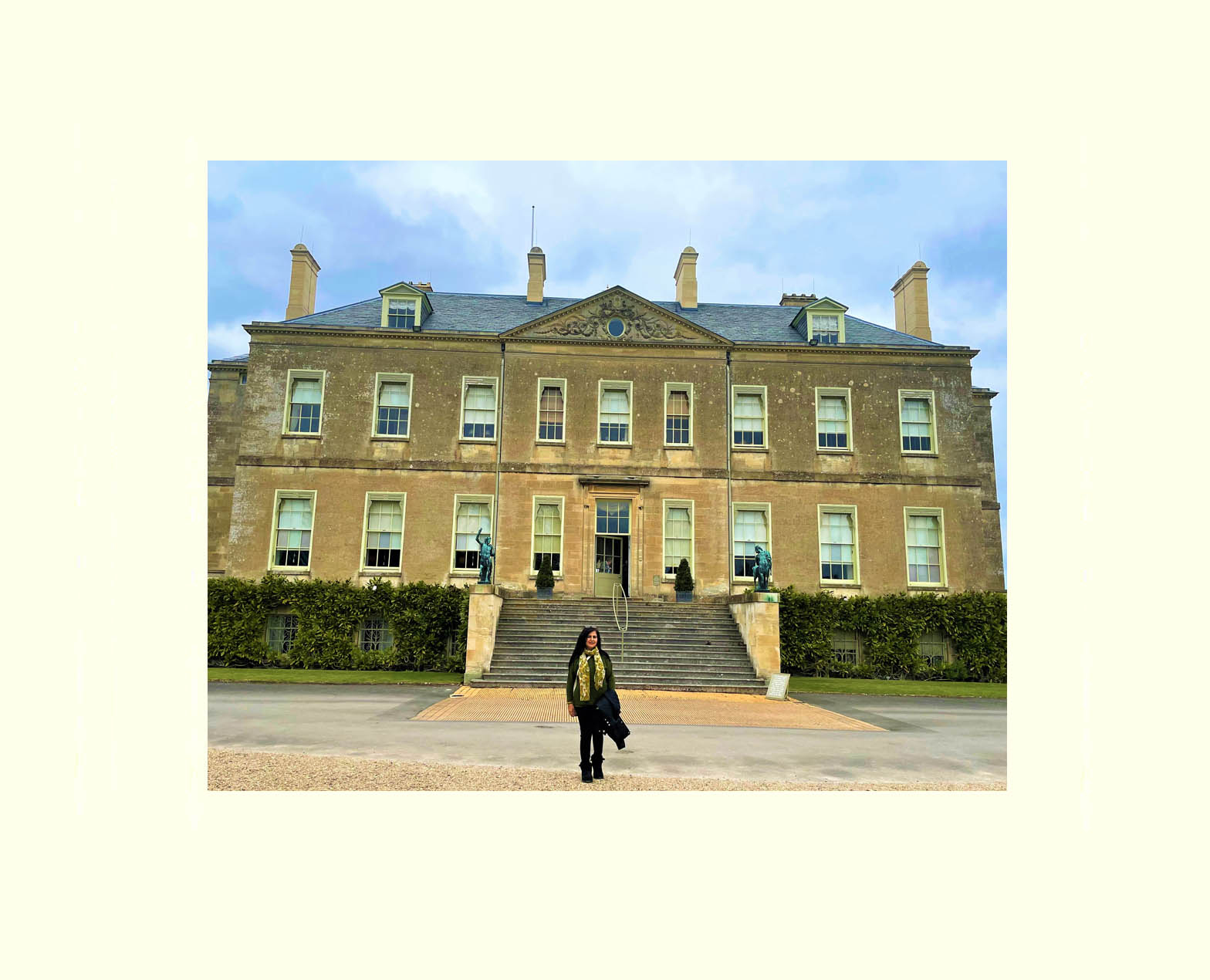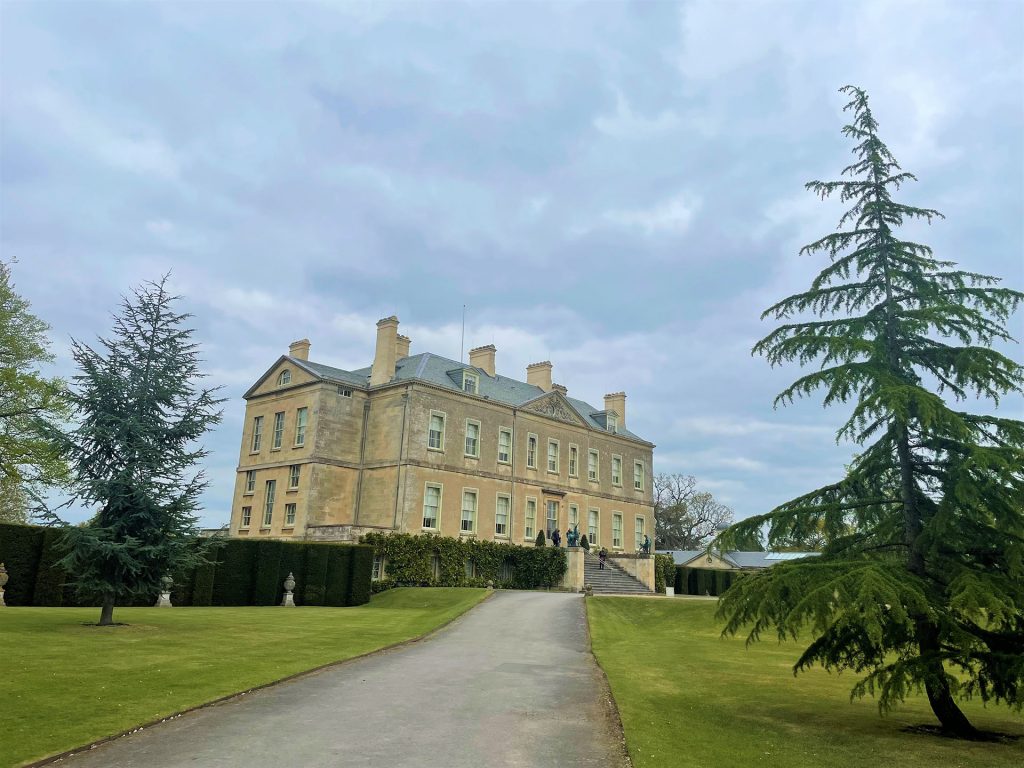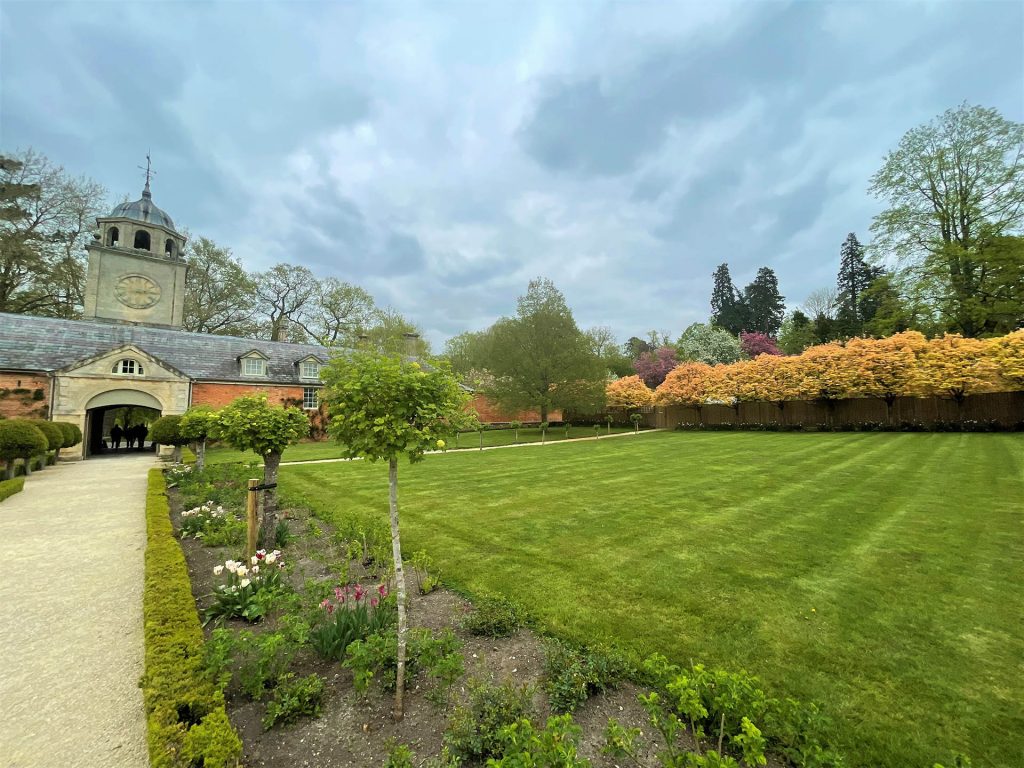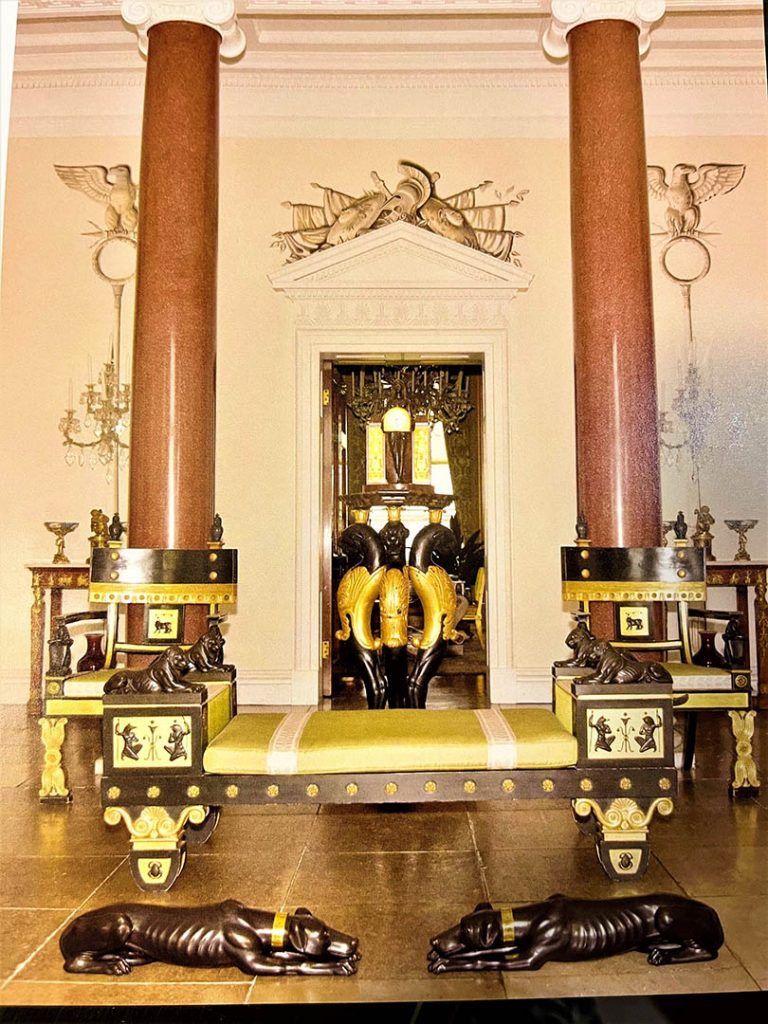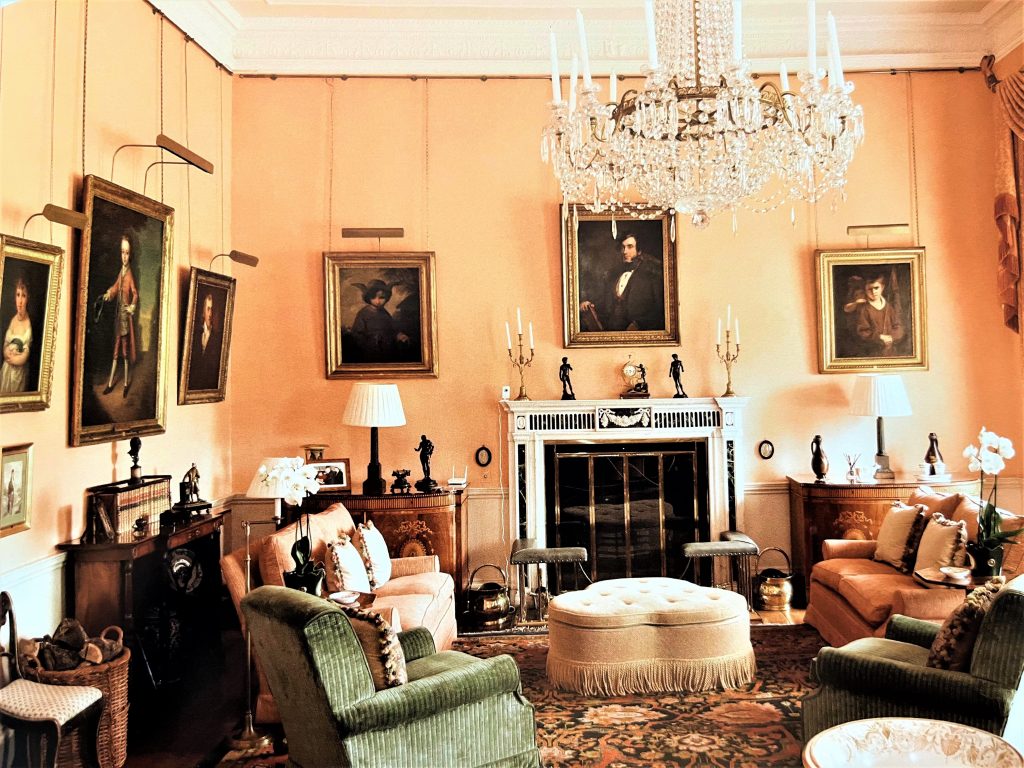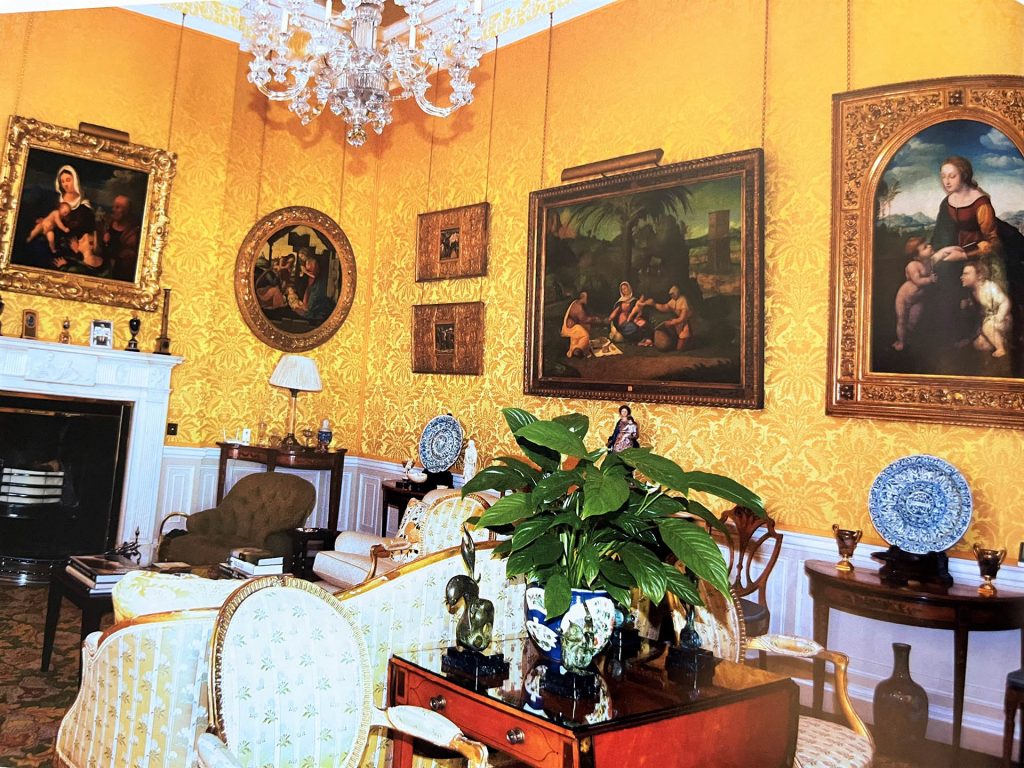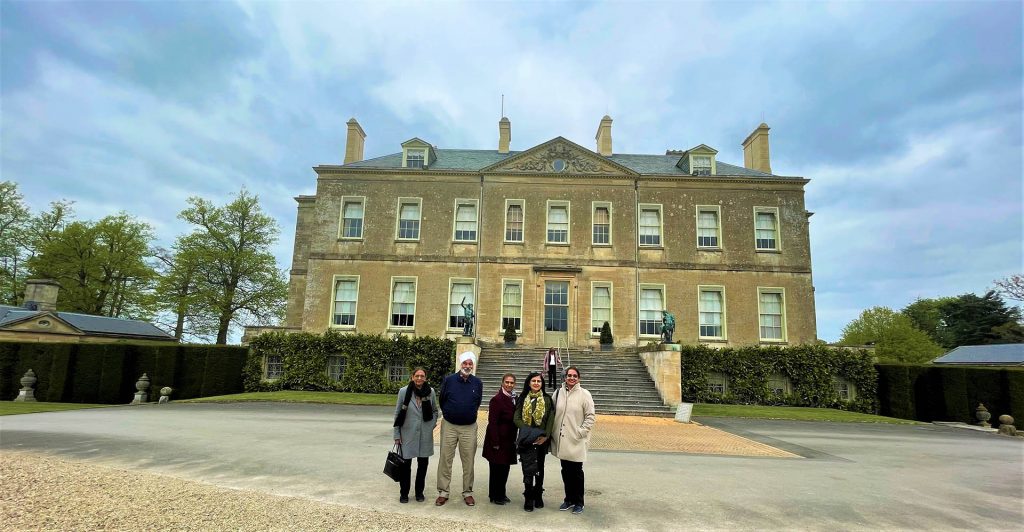The Three Centuries old Splendour of Buscot Park
On a rainy Spring day from the main motorway we turned into stunning environs- long-long tree lined path, over a lake bridge, past a large green paddock to reach the car park. We were in Faringdon, England and the trail ahead was swathed with foliage and had an interesting name on the guide map – the Parents Walk which had no steps! It was bordered with golden hue, bright-green bushes and purple-berberis low shrub to contrast it, that lend an inviting look to the path on this cloudy day.
Buscot Park – Art Collectors Delight
We were here to view the beautiful rare collections of Lord Farringdon and his family since the year 1889, who continue to live in Buscot Park Hall. The famed Faringdon collection included Dutch painter Rembrandt’s portrait of Pieter Six, London born Italian painter Rossetti’s portrait of majestic Pandora and British painter Burne-Jones’s series –The Legend of the Briar Rose, British painter Sir J Reynolds and British Landscapes painter Thomas Gainsborough paintings from 17th &18th century were also an lure for us which are not just worth millions but are masterpieces of the art-world! Furthermore, on our list were the assortment of ceramics, metal and many more object d’art besides the furniture designed by celebrated Robert Adam and Thomas Hope was highlight of Buscot Hall.
Historical Milieu
On my walk I recalled reading that I was visiting the home of the Henderson family whose great-grandfather Alexander Henderson bought Buscot Park in 1889 and later was bestowed the title of Lord Faringdon! He belonged to a distinguished scholarly family and was a gifted, wealthy Financier and became a Member of the Parliament in 1898. His grandson the 2nd Lord Faringdon studied from Eton and Oxford University and further added to the art collections that we were excited to see today!! Way-back in 1557; there was Sir Francis Stonor’s manor here that was purchased by Edward Loveden from his family so the Buscot-Hall and parks were originally created between 1779 and 1783, by Loveden.
The Unaltered Buscot Park of 1780’s
Subsequently we reached a vast green lawn whose path led to the imposing Buscot Hall and we caught its first view. I stepped into the Time Machine to be in the Buscot Park of 1780, the pediment encasing the Faringdon family Crest and not much of the elevation has changed till today! Admiring the two bronze statues of Centaurs on both sides of the grand staircase we climbed up to the Entrance of Buscot Hall. (The Greek Centaurs depict a creature with upper part of a man and rest of the body and legs of a horse) The broad flight of steep stone-steps led to the first floor of the large Palladian house (Palladian architecture is a fashionable European classical architectural style, a name derived from Italy’s Venetian architect Andrea Palladio)
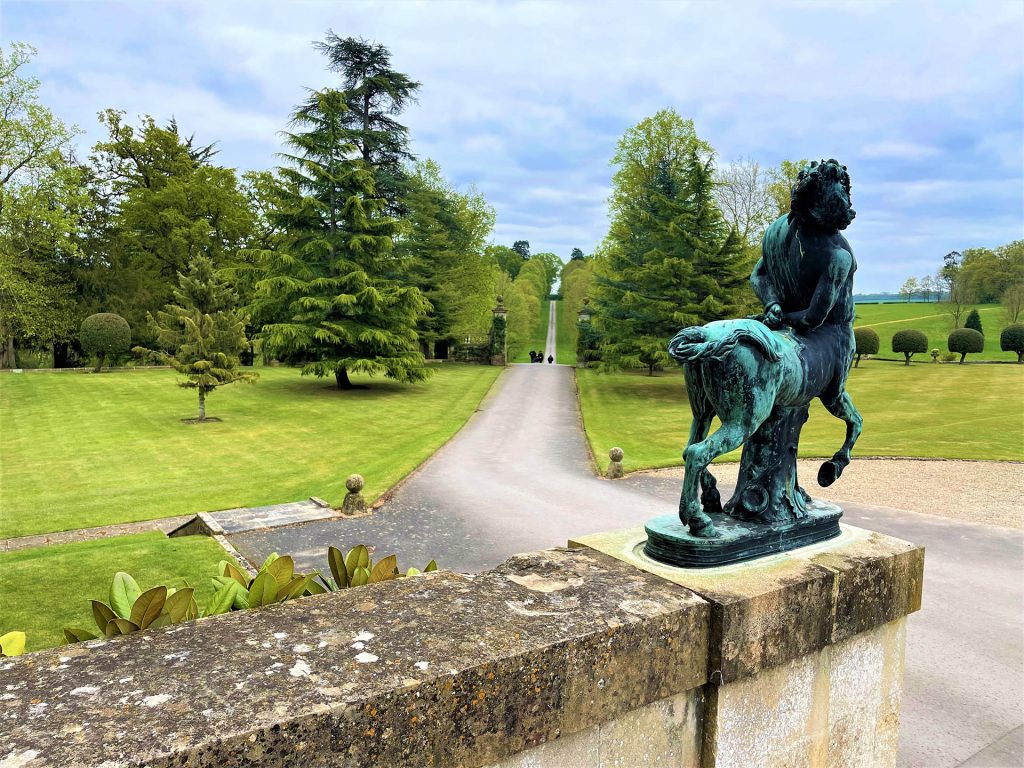
Two bronze Centaurs-Greek statues of man-horse , flanking the grand staircase leading to the Buscot Park Hall
The Opulence of the Hall
We entered the dazzling Hall whose Sculptures are extraordinary, oldest being the statue of Apollo carved in Rome in the 1600’s. Maximum furniture and ceramics in the room were Regency style- the style of the 1800’s; a version of French & English style, pioneered by designer Thomas Hope. The Egyptian -style furniture was probably influenced by the 1798 Battle of Nile! We were impressed to see the original columns and waxed stone flags from original owner Loveden’s era in1780’s!!
Meeting the Dutch Master-Painters
Next we entered the large, striking Dutch room appropriately named as it exhibits the celebrated Dutch painters’ collections and is created out of 2 smaller rooms. Redecorated in the year 2000 its highlights are the unique paintings especially by Rembrandt, notable works by Master Dutch painters- Withoos, Rubens & Jordaens alongwith Chippendale furniture and neo-classical furniture by the renowned interior designer Robert Adam.
Passage down the Centuries to the Dining Hall
Admiring the Chinese Vases dating from 1650- 75 we moved into the Passage holding giltwood side-tables, excellent works in glass, Mirror pieces, ancient Egyptian jars, Vase from Sicily, Japanese Imari vase, marble statue of Diana on a Roman tombstone to cite a few exhibits!
The grand red wallpaper Dining room with sparkling glass chandelier hanging from plasterwork ceiling and impressive wall-paintings , is like anyone’s dinner dream come true! A mahogany -top extendable table bordered by a band of inlaid rosewood was laid with iridescent gold-red crockery, gilt & glass Candelabras and centre piece of ornate low flower arrangement; looked so inviting!
Saloon and Sleeping Beauty
We enthusiastically headed for the Saloon where artist Burne-Jones ‘Sleeping Beauty’ series was displayed- Legend of the Briar Rose. After 20 years of hard work his four large paintings were finally exhibited at a gallery in Bond Street London from where the 1st Lord Faringdon purchased them for Buscot Park Hall. The volunteer added that few years later when Burne-Jones visited Buscot Park, he painted narrow panels that repeat the Briar Rose motif in the prevailing spaces in between the paintings to enhance them!
The restored gold silk wall hangings and original fireplace with the main painting- The Legend of the Briar Rose: The Rose Bower is breath-taking view. I wondered if the first owner Loveden would find any semblance to his original room now except the mahogany doors and neo classical plaster work ceiling and frieze!!
The 18th century Golden Drawing room
The acme of the mustard Drawing room is the Italian painting collection acquired by the first two Lords Faringdon. Past notable rosewood, satinwood furniture and attractive ceramics we came across a gorgeous 2-tier Messel Cabinet probably by Robert Adam that held the fine collection of unique Plates and Tazzas.
Admiring miniature portraits and innumerable artworks we eagerly headed for the Staircase hall leading to the first floor.
Regal Normanton State Bed and the Pandora
Up the Grand Staircase watching the commendable mythological legends ceiling & wall paintings, past beautiful Landings embellished with more lavish collectors’ pieces we entered the Normanton State bedroom which held a beautiful majestic bed made in the year1702, bought from another State home Normanton Park in posh Rutland! The amazing expensive bed has been restored by experts in historic textiles and beds!!
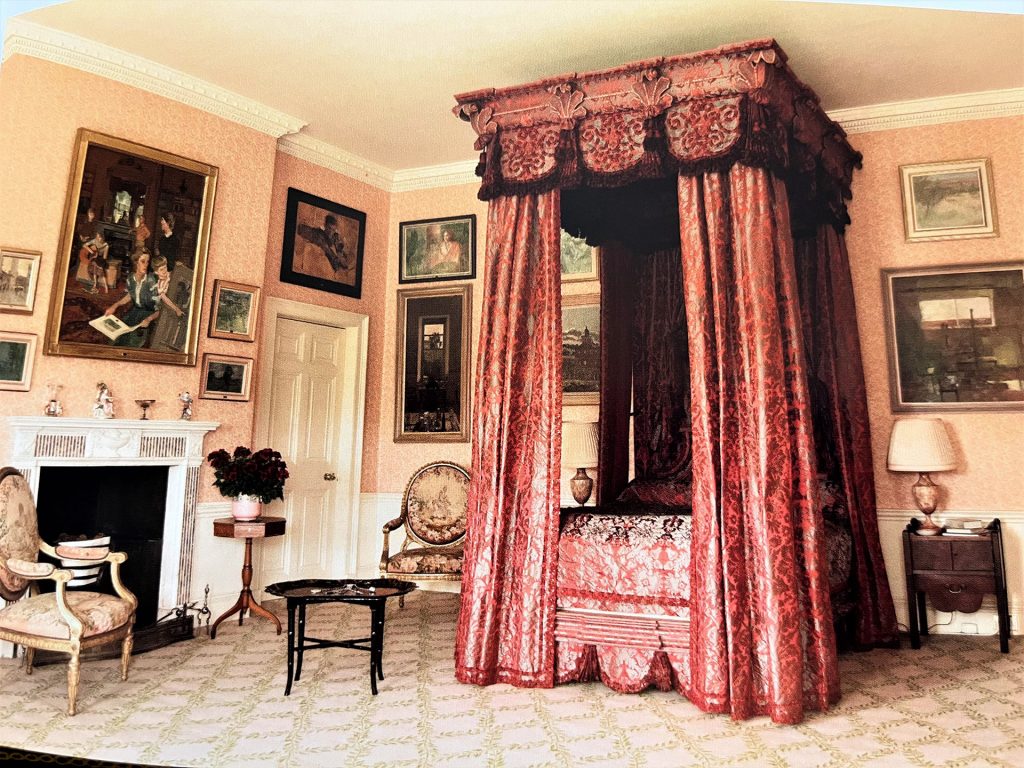
The majestic bed in the Normanton State Bedroom acquired by Lord Faringdon from a sale at Normanton Park , built in 1702_
Subsequently, we eagerly entered another room to view another famous painting Pandora by artist Rossetti – the mythological figure whose jar on being opened released evil into the world!!
Buscot Park Hall- of Gardens & More
Lastly, we headed downstairs to the main ornamental Hall; appreciative of the outstanding contribution of the National Trust in preservation of the Buscot Hall Park. We decided to explore the acres of gardens and terraces of Buscot Park Hall especially the Cherry Blossom trees lined avenue & the Chinese Terracotta Army garden- that envelope the 18th century home of the Lord & Lady Faringdon and their family.
Photo Courtesy: Mr. Arvind Chopra
